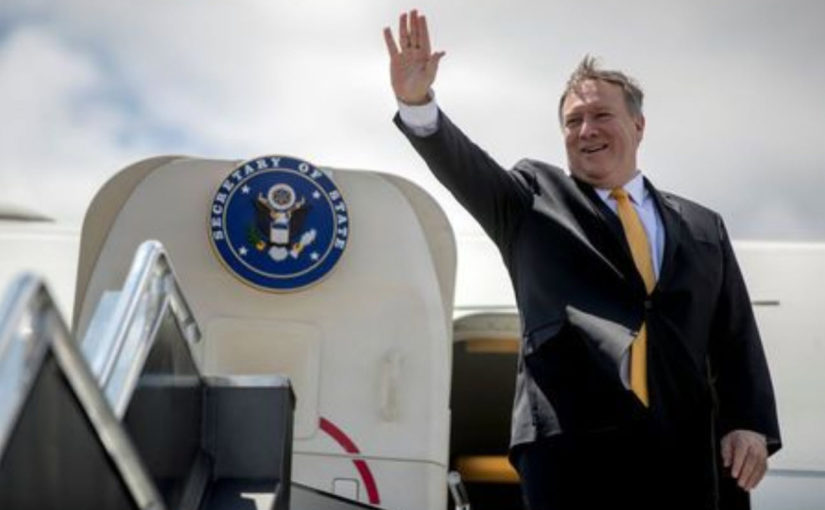How Eurasia Will be Interconnected

The extraordinary confluence between the signing of the Iran-China strategic partnership deal and the “Ever Given” saga in the Suez Canal is bound to spawn a renewed drive to the Belt and Road Initiative (BRI) and all interconnected corridors of Eurasia integration.
"Ever Given" saga in the Suez Canal
EverGiven is one of the largest container ships in the world. The ship is owned by Shoei Kisen Kaisha, and is time chartered and operated by container transportation and shipping company Evergreen Marine, headquartered in Luzhu District, Taoyuan City, Taiwan.
In April 2021, it blocked the Suez Canal for days leading onto weeks, and put a halt to most sea-traffic using the canal.
Iran-China strategic partnership The Iran-China bilateral 25-year Comprehensive Strategic Partnership was signed in Tehran by foreign ministers Javad Zarif and Wang Yi on 27 March 2021. While specific details of the agreement are unknown, the joint statement released on signing refers to strengthening political and parliamentary ties, the recognition and pursuit of mutual strategic interests, increased cooperation in defense training, equipment, technology, and intelligence, increased cooperation in counterterrorism and counter-narcotics, and expanded economic ties, especially in finance, mining, energy, agriculture, and infrastructure. Infrastructure includes ports and railway networks and is linked to China’s Belt and Road Initiative (BRI).
This is the most important geoeconomic development in Southwest Asia in ages – even more crucial than the geopolitical and military support to Damascus by Russia since 2015.
Multiple overland railway corridors across Eurasia featuring cargo trains crammed with freight (the most iconic of which is arguably Chongqin-Duisburg) are a key plank of BRI. In a few years, this will all be conducted on high-speed rail.
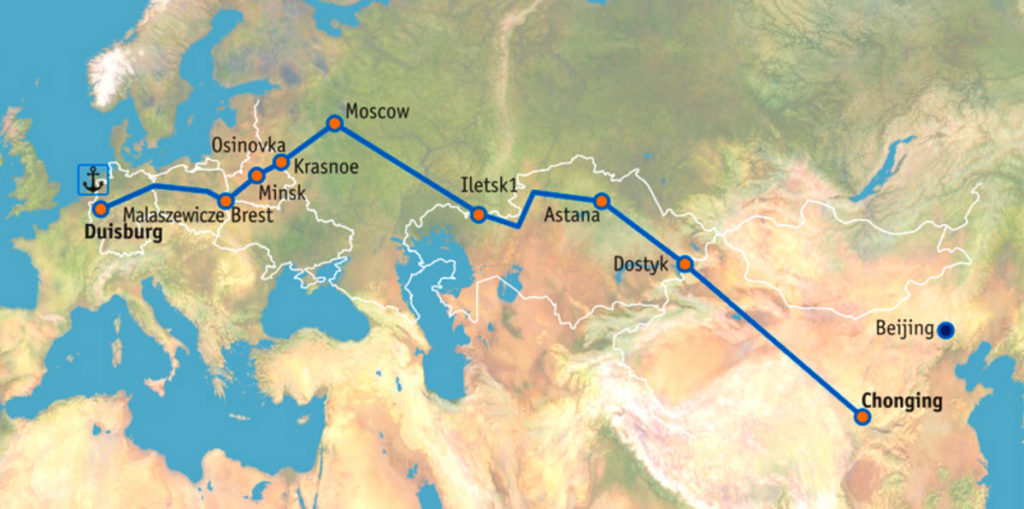
ChinaandEurope: Reconnecting Across a New Silk Roaddigitalrepository.trincoll.edu/cgi/viewcontent.cgi?article=1129&context=facpub Chongqing Duisburg BELARUS GERMANY POLAND Venice Athens GEORGIA ARMENIA AZERBAIJAN Colombo TRANS-EURASIA RAILROADThe 11,179-kilometre rail line is the most important connection to Europe. Launched in 2011 by a joint venture with Germany, China, Kazakhstan, and Russia, the rail goes from the city of Chongqing in southwestern China to Duisburg,Germany.
The key overland corridor is Xinjiang-Kazakhstan. (As shown in the map below.)
And then onwards to Russia and beyond outbound to Europe.

The other overland corridor traverses Central Asia and Iran, all the way to Turkey, the Balkans and Eastern Europe. It may take time – in terms of volume – to compete with maritime routes, but the substantial reduction in shipping time is already propelling a massive cargo surge.
The Iran-China strategic connection is bound to accelerate all interconnected corridors leading to and crisscrossing Southwest Asia.
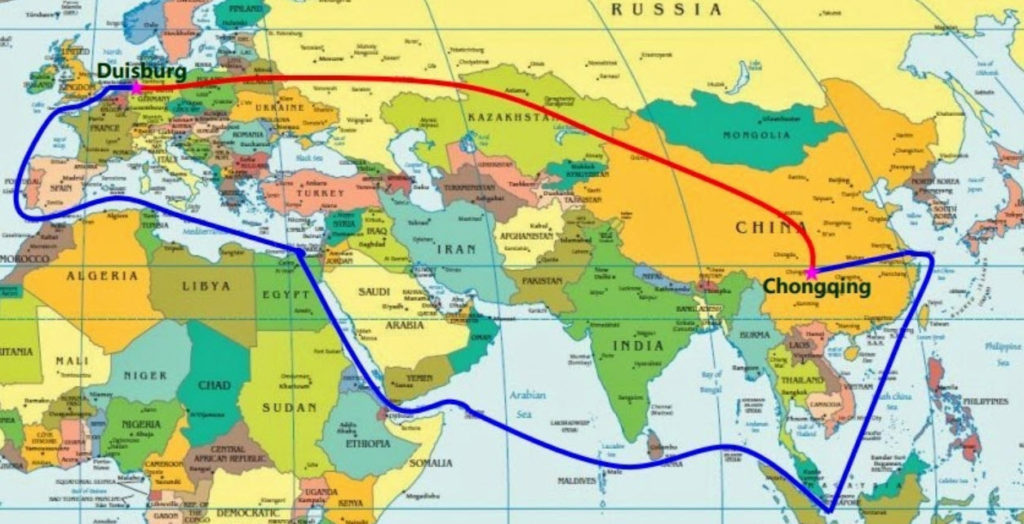
Crucially, multiple BRI trade connectivity corridors are directly linked to establishing alternative routes to oil and gas transit, controlled or “supervised” by the Hegemon since 1945: Suez, Malacca, Hormuz, Bab al Mandeb.
HegemonyHegemony (UK:, US:) is the political, economic, or military predominance or control of one state over others. In ancient Greece (8th century BC – 6th century AD), hegemony denoted the politico-military dominance of a city-state over other city-states. The dominant state is known as the hegemon. In the 19th century, hegemony came to denote the "Social or cultural predominance or ascendancy; predominance by one group within a society or milieu". Later, it could be used to mean "a group or regime which exerts undue influence within a society". Also, it could be used for the geopolitical and the cultural predominance of one country over others, from which was derived hegemonism, as in the idea that the Great Powers meant to establish European hegemony over Africa, Asia and Latin America. -Wikipedia
Black Ops for the Ever Given Blockage in the Suez Canal?
Informal conversations with Persian Gulf traders have revealed huge skepticism about the foremost reason for the Ever Given saga.
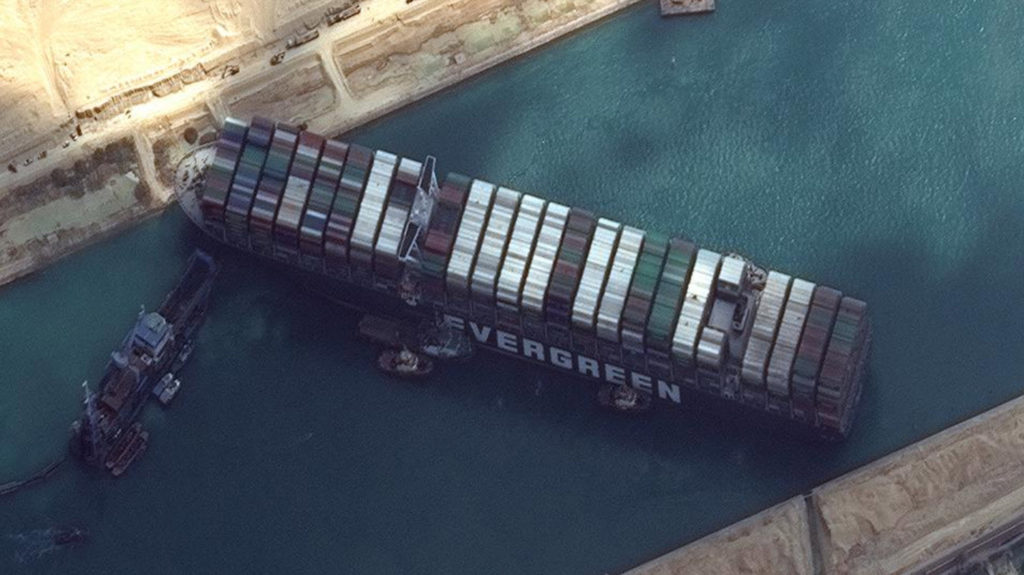
.
Merchant marine pilots agree that winds in a desert storm were not enough to harass a state of the art mega-container ship equipped with very complex navigation systems.
The pilot error scenario, induced or not, is being seriously considered.
Then there’s the predominant shoptalk: stalled Ever Given was…
- Japanese owned,
- Leased from Taiwan,
- UK-insured,
- With an all-Indian crew,
- Transporting Chinese merchandise to Europe.
No wonder cynics, addressing the whole episode, are asking, Cui Bono?
Cui BonoCui bono? (Classical Latin: [kui̯ ˈbɔnoː]), in English "to whom is it a benefit?", is a Latin phrase about identifying crime suspects. Itexpresses the view that crimes are often committed to benefit their perpetrators, especially financially. Which party benefits may not be obvious, and there may be a scapegoat. -Wikipedia
Persian Gulf traders, in hush hush mode, also drop hints about the project for Haifa to eventually become the main port in the region. This would be in close cooperation with the Emirates. It would connect via a railway to be built between Jabal Ali in Dubai to Haifa, bypassing Suez.
-
-
- China-Iran pact paves way for alternative to Suez – Asia Times
- China-Iran Pact Paves Way for Alternative to Suez
- Escobar: How Eurasia Will Be Interconnected
- How Eurasia Will Be Interconnected | Covert Geopolitics
- Escobar: How Eurasia Will Be Interconnected – The Rabbit Hole
- How Eurasia will be interconnected | The Vineyard of the Saker
-
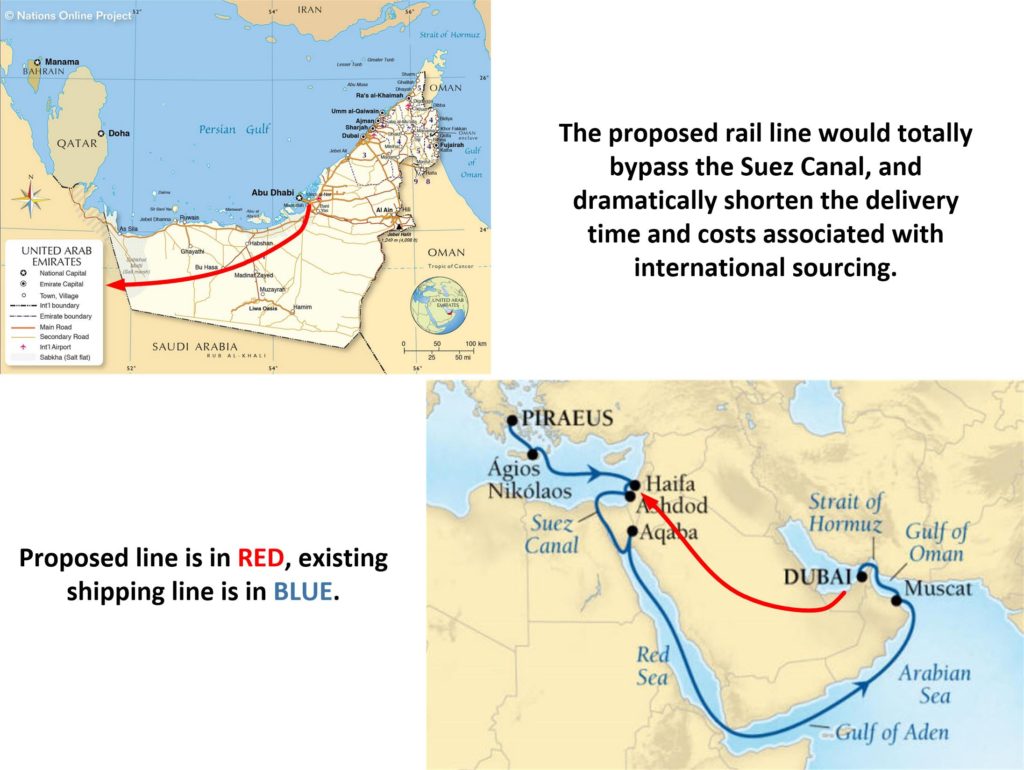
Iranian Oil to XingJiang
Back to facts on the ground, the most interesting short-term development is how Iran’s oil and gas may be shipped to Xinjiang via the Caspian Sea and Kazakhstan – using a to-be-built Trans-Caspian pipeline.
Trans-Caspian Gas Pipeline (TCP) is a proposed pipeline which would transport gas from Turkmenistan to Azerbaijan across the Caspian sea via an undersea pipeline.[1] It is also known as the South Caucasus Pipeline Future Expansion (SCPFX), due to its connection with the South Caucasus Gas Pipeline. It is similar to the proposed Trans-Caspian 2 Gas Pipeline. In May 2019 a pre-FEED (front end engineering and design) study began for a plan to build two Trans-Caspian pipelines. The first pipeline would follow an expanded SGC route (South Caucasus Pipeline, Tanap and Tap) to a final destination of Italy. The Trans-Caspian 2 Gas Pipeline would follow the White Stream route from the Georgian coast, entering the EU in Romania and reaching western Europe via existing pipelines in Romania, Moldova, Ukraine, Slovakia and onwards. - Global Fossil Infrastructure Tracker, a project of Global Energy Monitor
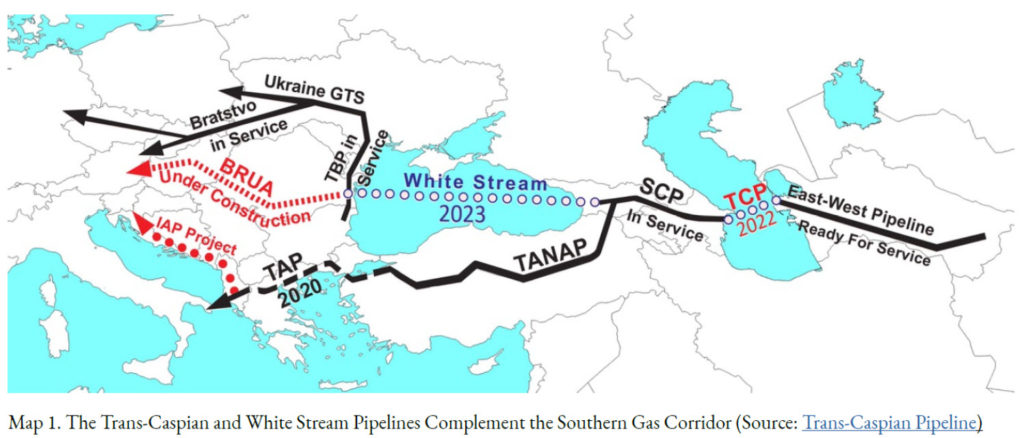
That falls right into classic BRI territory.
Actually more than that, because Kazakhstan is a partner not only of BRI but also the Russia-led Eurasia Economic Union (EAEU).
The Trans-Caspian Gas Pipeline for Peace-building in the South Caucasus
From Beijing’s point of view, Iran is also absolutely essential for the development of a land corridor from the Persian Gulf to the Black Sea and further to Europe via the Danube.
It’s obviously no accident that the Hegemon is on high alert in all points of this trade corridor…
- “Maximum pressure” sanctions and hybrid war against Iran;
- An attempt to manipulate the Armenia-Azerbaijan war;
- The post-color revolution environment in both Georgia and Ukraine – which border the Black Sea;
- NATO’s overarching shadow over the Balkans;
It’s all part of the plot.
Now get me some Lapis Lazuli
Another fascinating chapter of Iran-China concerns Afghanistan.
According to Tehran sources, part of the strategic agreement deals with Iran’s area of influence in Afghanistan and the evolution of still another connectivity corridor all the way to Xinjiang.
And here we go back to the always intriguing Lapis Lazuli corridor – which was conceptualized in 2012, initially for increased connectivity between Afghanistan, Turkmenistan, Azerbaijan, Georgia and Turkey.
Lapis Lazuli corridor LapisLazuliisan international transit route openedin 2018 linking Afghanistan toTurkeyviaTurkmenistan, Azerbaijan andGeorgia. The name “Lapis Lazuli” isderived from the historic route that Afghanistan'slapislazuliand other semiprecious stones were exported along, over 2,000 years ago, to the Caucasus, Russia, the Balkans, Europe, and North Africa along the ancient Silk Road. The initiative will serve to reinforce the Afghan Government's Infrastructure and Connectivity Development, Energy, and Private Sector Development National Priority Programs. The Lapis Lazuli corridor is funded by the Asian Development Bank. Currently, the transit project’s budget is estimated at $2 billion. -Wikipedia
Lapis Lazuli, wonderfully evocative, harks back to the export of an array of semiprecious stones via the Ancient Silk Roads to the Caucasus, Russia, the Balkans and North Africa.
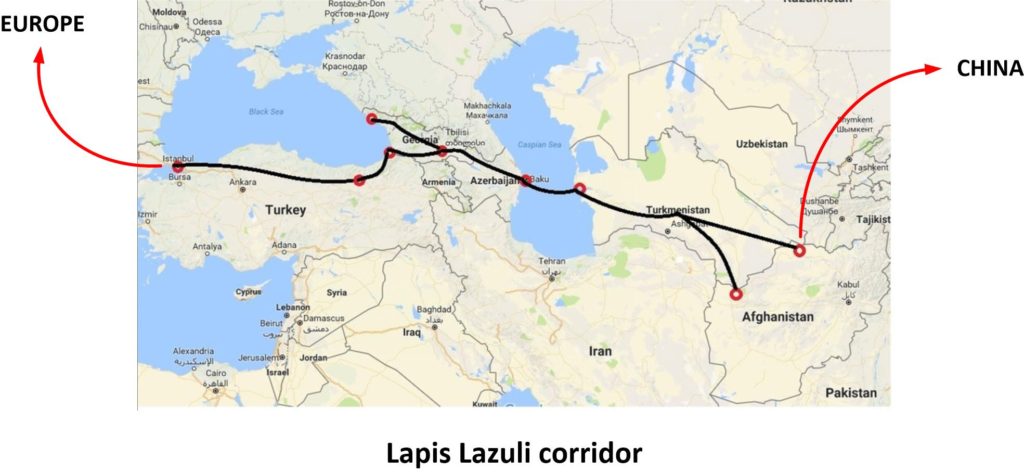
Now the Afghan government sees the ambitious 21st century remix as…
- Departing from Herat (a key area of Persian influence),
- Continuing to the Caspian Sea port of Turkmenbashi in Turkmenistan,
- Via a Trans-Caspian pipeline to Baku,
- Onwards to Tblisi,
- And through the Georgian ports of Poti and Batumi in the Black Sea,
- And finally connected to Kars and Istanbul.
This is really serious business; a drive that may potentially link the Eastern Mediterranean to the Indian Ocean.
Since Russia, Iran, Azerbaijan, Kazakhstan and Turkmenistan signed the Convention on the Legal Status of the Caspian Sea in 2018, in the Kazakh port of Aktau…
…what’s interesting is that their major issues are now discussed at the Shanghai Cooperation Organization (SCO), where Russia and Kazakhstan are full members.
- Iran will soon be;
- Azerbaijan is a dialogue partner;
- and Turkmenistan is a permanent guest.
Convention on the Legal Status of the Caspian Sea ... Publish Year: 2019 Author: Rizal Abdul Kadir Published: Apr 25, 2019 After twenty-two years of negotiations, in Aktau on August 12, 2018, Kazakhstan, Azerbaijan, Iran, Russia, and Turkmenistan signed the Convention onthe Legal Status of the Caspian Sea. The preamble of the Convention stipulates, amongother things, that the Convention, made up of twenty-four articles, was agreed on by the five states based on principles and norms of the Charter of theUnited Nations and International Law.
The Iranian Caspian Sea Canal
Construction of a navigable channel linking the Caspian Sea and the Persian Gulf is underway. It is expected the project will be completed in the 2020s. The project is particularly interesting for Russia due to the cold spell with Turkey, but European and post-Soviet states will also benefit from it. But it seems the US is worried about this alternative to the Suez Channel. "The West and Turkey have directly or indirectly tried to block the waterway [from being created]. As a matter of fact, the United States imposed sanctions" on companies that have been involved in the project, economic analyst Alexei Chickin wrote. -Sputnik News
One of the key connectivity problems to be addressed is the viability of building a canal from the Caspian Sea to Iran’s shores in the Persian Gulf.
- Trans-Caspian International Transport Route Takes Center
- Russia & Iran negotiate canal from Caspian Sea to Persian …
- China-Iran pact paves way for alternative to Suez – Asia Times
- Suez Canal issue reprised interest in the North South
That would cost at least US$7 billion.
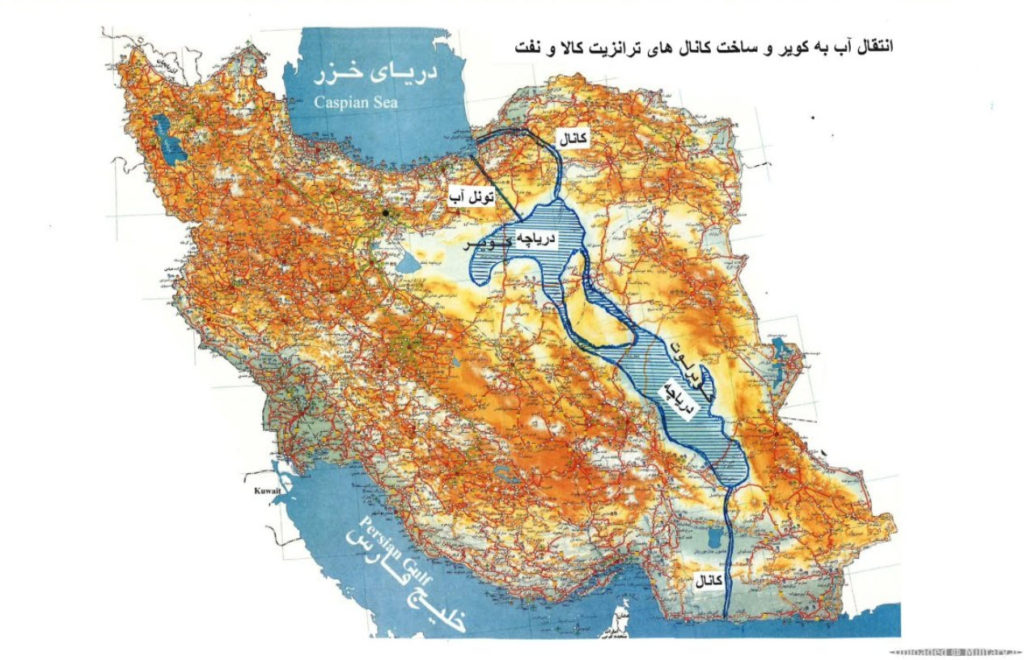
Another issue is the imperative transition towards container cargo transport in the Caspian.
In SCO terms, that will…
- Increase Russian trade with India via Iran
- As well as offering an extra corridor for China trade with Europe.
Now, with Azerbaijan prevailing over Armenia in the Nagorno-Karabakh flare up…
…while finally sealing a deal with Turkmenistan over their respective status in the Caspian Sea…
… impetus for the western part of Lapis Lazuli is now in the cards.
The eastern part is a much more complicated affair, involving an absolutely crucial issue now on the table not only for Beijing but for the SCO: the integration of Afghanistan to the China-Pakistan Economic Corridor (CPEC).
And then…
In late 2020, Afghanistan, Pakistan and Uzbekistan agreed to build what analyst Andrew Korybko delightfully described as the PAKAFUZ railway. PAKAFUZ will be a key step to expand CPEC to Central Asia, via Afghanistan. Russia is more than interested.
This can become a classic case of the evolving BRI-EAEU melting pot.
Crunch time – serious decisions included – will happen this summer, when Uzbekistan plans to host a conference called “Central and South Asia: Regional Interconnectedness. Challenges and Opportunities”.
So everything will be proceeding interconnected:
- A Trans-Caspian link;
- The expansion of CPEC;
- Af-Pak connected to Central Asia;
- An extra Pakistan-Iran corridor (via Balochistan, including the finally possible conclusion of the IP gas pipeline) all the way to Azerbaijan and Turkey;
- With China deeply involved in all these projects.
Beijing will be building roads and pipelines in Iran, including one to ship Iranian natural gas to Turkey.
Iran-China, in terms of projected investment, is nearly ten times more ambitious than CPEC.
Call it CIEC (China-Iran Economic Corridor).
In a nutshell: the Chinese and Persian civilization-states are on the road to emulate the very close relationship they enjoyed during the Silk Road-era Yuan dynasty in the 13th century.
INSTC or bust
An extra piece of the puzzle concerns how the International North-South Transportation Corridor (INSTC) will mix with BRI and the EAEU.
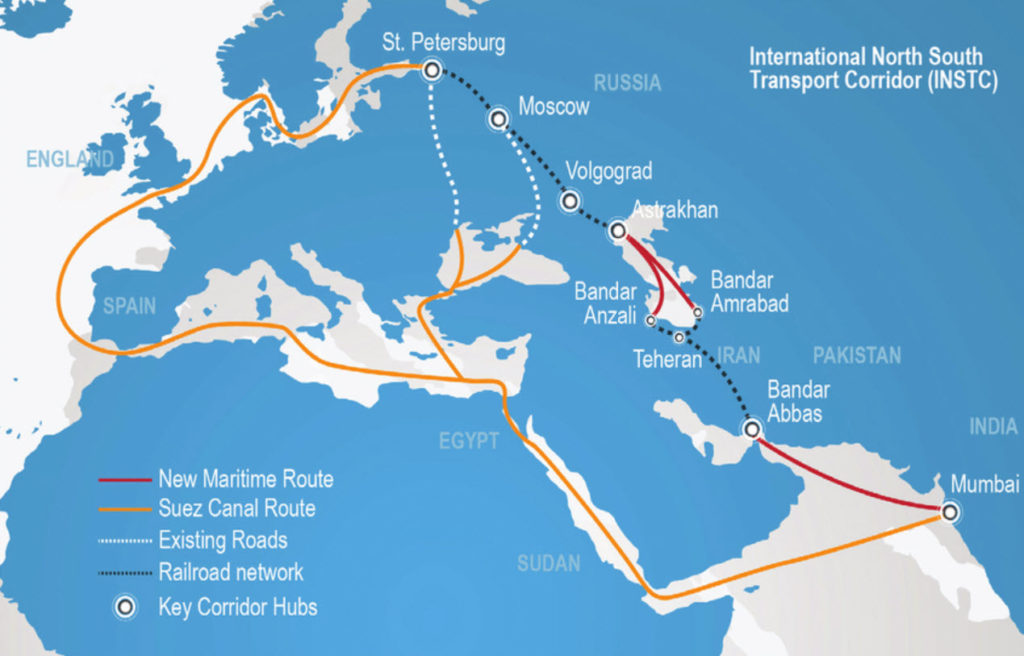
Crucially, INSTC also happens to be an alternative to Suez.
Iran, Russia and India have been discussing the intricacies of this 7,200 km-long ship/rail/road trade corridor since 2002.
INSTC technically starts in Mumbai and goes all the way via the Indian Ocean to Iran, the Caspian Sea, and then to Moscow.
As a measure of its appeal, Azerbaijan, Armenia, Belarus, Kazakhstan, Tajikistan, Kyrgyzstan, Ukraine, Oman, and Syria are all INSTC members.
Much to the delight of Indian analysts, INSTC reduces transit time from West India to Western Russia from 40 to 20 days, while cutting costs by as much as 60%.
It’s already operational.
But not yet as a continuous, free flow sea and rail link.
New Delhi already spent $500 million on a crucial project: the expansion of Chabahar port in Iran, which was supposed to become its entry point for a made in India Silk Road to Afghanistan and onward to Central Asia.
But then it all got derailed by New Delhi’s flirting with the losing United States “Quad” proposition.
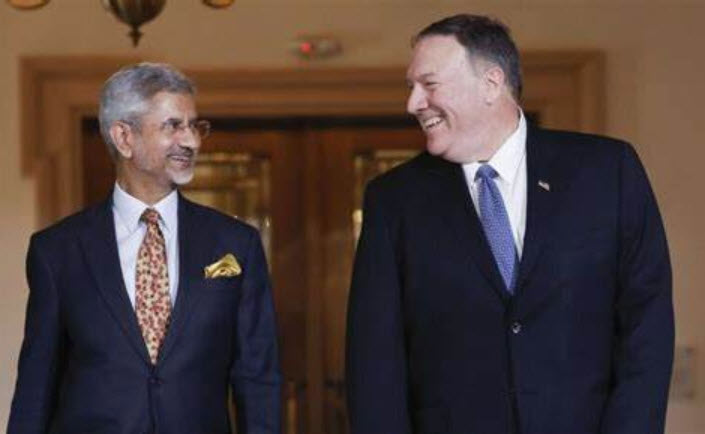
.
India also invested $1.6 billion in a railway between Zahedan, the key city in southeast Iran, and the Hajigak iron/steel mining in central Afghanistan.
This all falls into a possible Iran-India free trade agreement which is being negotiated since 2019 (for the moment, on stand-by).
Iran and Russia already clinched a similar agreement.
And India wants the same with the EAEU as a whole.
Following the Iran-China strategic partnership, chairman of the Iranian Parliament’s National Security and Foreign Policy Committee, Mojtaba Zonnour, has already hinted that the next step should be an Iran-Russia strategic cooperation deal, privileging…
“rail services, roads, refineries, petrochemicals, automobiles, oil, gas, environment and knowledge-based companies”.
Volga–Don Canal
What Moscow is already seriously considering is to build a canal between the Caspian and the Sea of Azov, north of the Black Sea. Meanwhile, the already built Caspian port of Lagan is a certified game-changer.
Thisisbecause one of the twocanals connecting the Caspian Sea to the outside worldistheVolga–Don Canal, which links the Caspian Sea with the Sea of Azov. Russia hasused the Volga–Don Canal to move warships between the Caspian Sea andtheSea of Azov. -Russian dominancein the Black Sea: TheSeaofAzov

Lagan directly connects with multiple BRI nodes.
There’s rail connectivity to the Trans-Siberian all the way to China.
Across the Caspian, connectivity includes Turkmenbashi in Turkmenistan and Baku in Azerbaijan, which is the starting point of the BTK railway through to the Black Sea and then all the way from Turkey to Europe.
On the Iranian stretch of the Caspian, Amirabad port links to the INSTC, Chabahar port and further on to India. It’s not an accident that several Iranian companies, as well China’s Poly Group and China Energy Engineering Group International want to invest in Lagan.
What we see in play here is Iran at the center of a maze progressively interconnected with Russia, China and Central Asia.
When the Caspian Sea is finally linked to international waters, we will see a de facto alternative trade/transport corridor to Suez.
Himalaya Silk Road
Post-Iran-China, it’s not far-fetched anymore to even consider the possible emergence in a not too distant future of a Himalaya Silk Road uniting BRICS members China and India (think, for instance, of the power of Himalayan ice converging into a shared Hydropower Tunnel).
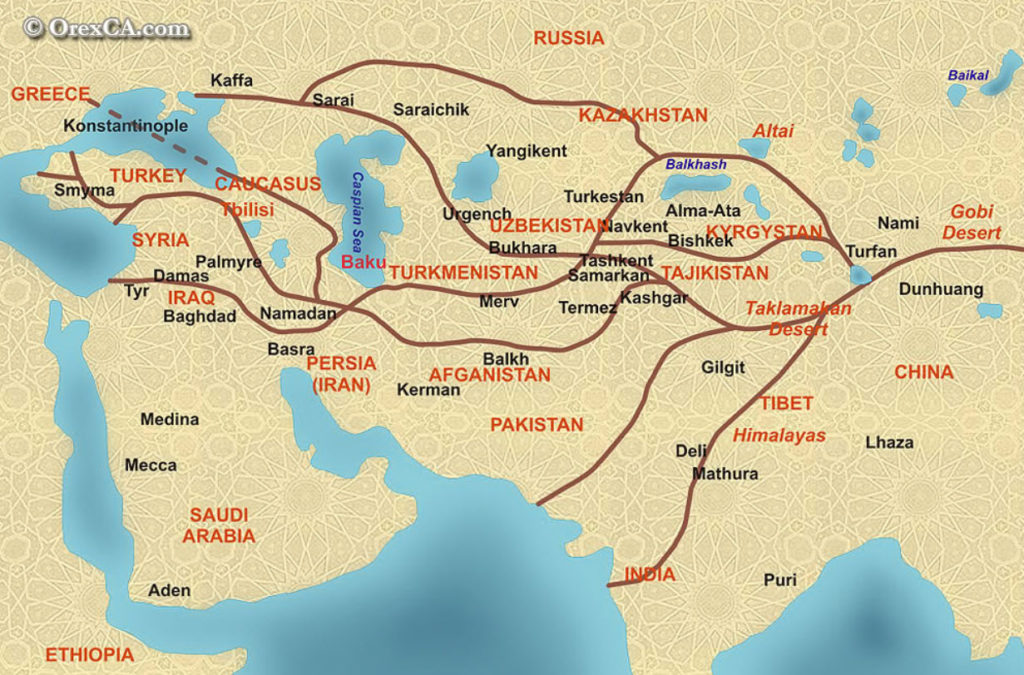
.
As it stands, Russia is very much focused on limitless possibilities in Southwest Asia, as Foreign Minister Sergey Lavrov made it clear in the 10thMiddle East conference at the Valdai club.
The Hegemon’s treats on multiple fronts – Ukraine, Belarus, Syria, Nord Stream 2 – pale in comparison.
21st Century Geopolitics
The new architecture of 21st century geopolitics is already taking shape, with China providing multiple trade corridors for non-stop economic development…
…while Russia is the reliable provider of energy and security goods, as well as the conceptualizer of a Greater Eurasia home…
… with “strategic partnership” Sino/Russian diplomacy playing the very long game.
Southwest Asia and Greater Eurasia have already seen which way the (desert) winds are blowing.
And soon will the masters of international capital. Russia, China, Iran, India, Central Asia, Vietnam, Indonesia, the Korean Peninsula, everyone will experience a capital surge – financial vultures included.
Following the Greed is Good gospel, Eurasia is about to become the ultimate Greed frontier.
…if left unencumbered.
The United States has a say…
The problem with the BRI is that it links Europe to Russia, Persia and China and permits local currency use instead of the USD and oceanic maritime trade. Over a period of time, the value of the USD will decrease due to it no longer being the global currency, and in order to maintain it’s value the United States would have to revert back tot he “gold standard”.
Which shouldn’t be a problem. Right?
I’m sure that the United States has 30 trillion dollars worth of gold stashed here and there. Somewhere. <\sarcasm>
Of course, it is in the best interests of the United States to prevent any kind of prosperity, or changes at any level from occurring in Asia. Any and all changes will have a negative effect on America at all levels. The only way that America can maintain it’s “rules based hegemony” (The USA makes the rules, and you either follow them or be destroyed) is for it to be the dominant and preeminent ruling structure on the globe.
Here is a couple of links to thorough, in-depth analysis </sarcasm> of this situation from America;
- How the U.S. Should Respond to China’s Belt and Road
- China Is Weaponizing the Belt and Road. What Can the US
- China’s ‘World-Island’ Ambitions – USA News and Politics
- US proposal for a parallel BRI project – Daily Times
Nah. They pretty much say the same tired old thing. China is doing this because it is evil and wants to ensnare the world like a spider trapping a fly in it’s web. Yada, yada, yada.
The only way to stop this is militarily
And that, in itself open up a “whole can of worms”.
on April 10, 2021 · at 5:56 pm EST/EDT I watched an excellent documentary on war a fews years ago. They talked about wars going back thousands of years to the present. When an army is going to attack, all the plans and logistics are carefully put in place. Once all the preparations have been made the only thing left is to trigger it off. The instigators do not want to be seen as the aggressors so they fabricate (false flag) something so they claim they were attacked first — and off they go. The war they planned and wanted so bad is underway. The Russian military would see all this unfolding – it’s on rails. But what could they do? The USA won’t be deterred. The only way this could have been avoided that I can see is that if the USA feared a nuclear war with Russia to the extent they would not take such ridiculously dangerous chance.
Here’s a great article by John Paul Roberts that is certainly worth a read regarding the sum total of military options that the USA has…
The Dictatorship of Numbers
In Continuation of a Conversation with Paul Craig Roberts Andrei Martyanov • April 7, 2021
Conclusion
You all can believe what you want. I know full well what is going on. If China is surrounded by peaceful and successful trading partners, then China will be safe and secure from conflict, invasion or NGO-sponsored “color revolutions”. Like Switzerland, like Germany, like Italy, and like Finland are today. Its a belief in the win-win possibilities of long term planning, cooperation and leadership by merit.
And nations that make physical things, that provide physical services, and that partner for joint success for their peoples will invariably be more successful, and longer lasting than ones that retain their existence on supporting a small patricidal oligarchy leadership that makes nothing of substance, but trades in invisible vapor ideas, and numbers on large elaborate spreadsheets.
But, you know, the United States is ruled by idiots.
And no matter how much we can reason, we can pray, or we can justify our actions and ideas and thoughts, the wildcard of an insane morn like Mike Pompeo with his finger on the military operations is a serious and real danger….
…as opined by this commenter…
on April 11, 2021 · at 9:24 am EST/EDT What will happen next? In June, During the NATO exercise Defending Europe 21, the Ukro NAZIs or Turkish controlled head-choppers will launch a falls flag attack. This could be a chemical weapon launched against Ukrainian soldiers, claiming that the attack was launched by the Donbass militia, and that the chemical weapon was supplied by Russia. The western MSN will blame Russia for the aggression. While Russia is busy defending itself against the unjust accusations from the so called international community, the NATO exercise will go live and invade Donbass, claimed as humanitarian intervention. The only way this can be avoided is if the US really fears a nuclear attack on American soil. As soon as the first falls flag attack occurs in Ukraine, Russia should launch a nuclear weapon on American soil. A good target will be the HAARP facility located in desolate Alaska. The facility is operated by the private Global Elite, and hated world wide for its clandestine operations. When the facility is reduced to rubble, and nuclear radiation is traveling the northern hemisphere via the Jet stream, the western MSN will go into hysteria, calling for a ceasefire. Mass demonstrations against war and COVID Lock Down will quickly turn into Riots and civil war, devastating every major city in Europe and America. If the NATO do not stop its invasion of Donbass by then: Russia will send missiles against every NATO Command center located in Ukraine and Poland. And then hell will break loose: China will attack US Navy vessels in the South China Sea and invade Taiwan. North Korea will attack South Korea. Nationalist in Japan will attack US deployments in Japan. The Philippines will attack US assets like Al Qaeda in the region and invade Indonesia. The Taliban will attack US and NATO deployments in Afghanistan. India will enter into war with Pakistan. Iraq will attack the US deployment in Bagdad, and northern Iraq. Iran will attack US-NATO vessels in the Gulf, ending all oil supply to the west. Yemen will attack Saudi Arabia. Somalia will attack all ships in the bay of Aden. Egypt will close the Suez Canal. Syria will launch an attack against Turkish troops in Northern Syria. Russia will shoot down every Fighter jet and drone entering Syrian airspace. Lebanon will attack Israeli forces in the Golan. Hezbola will attack Israel from Gaza. Libya will launch attacks against Turkish troops in Libya. Armenia will launch major attack against Turkish forces in eastern Anatolia. Greece will attack Turkish transgression of Greek airspace and Turkish vessels near Cyprus. Civil war will erupt in the Balkan, Serbia will retake Kosovo, and enter war with Bosnia-Herzegovina. Civil war will erupt in Spain, and Catalonia will secede from Madrid. Paris will enter into chaos, and Macron will flee. Al-Qaeda will launch a major attack on French troop in West Africa. Venezuela will attack US navy vessels in the Caribbean sea. Argentina will invade the Falkland Islands. American Patriots will storm Washington for real. The National Guard protecting DC will defect. CIA and FBI Agent will be hunted down by American Patriots. Many states will secede from the US. Most western government will be forced to step down. The EU and NATO will disintegrate. All Nordic Nations will enter into a Nordic defense Alliance. As the American Fascist Empire collapses, the multi polar world will be reborn.
Do you want more?
I have more posts in my BRI sub-index within my China index…
China.


